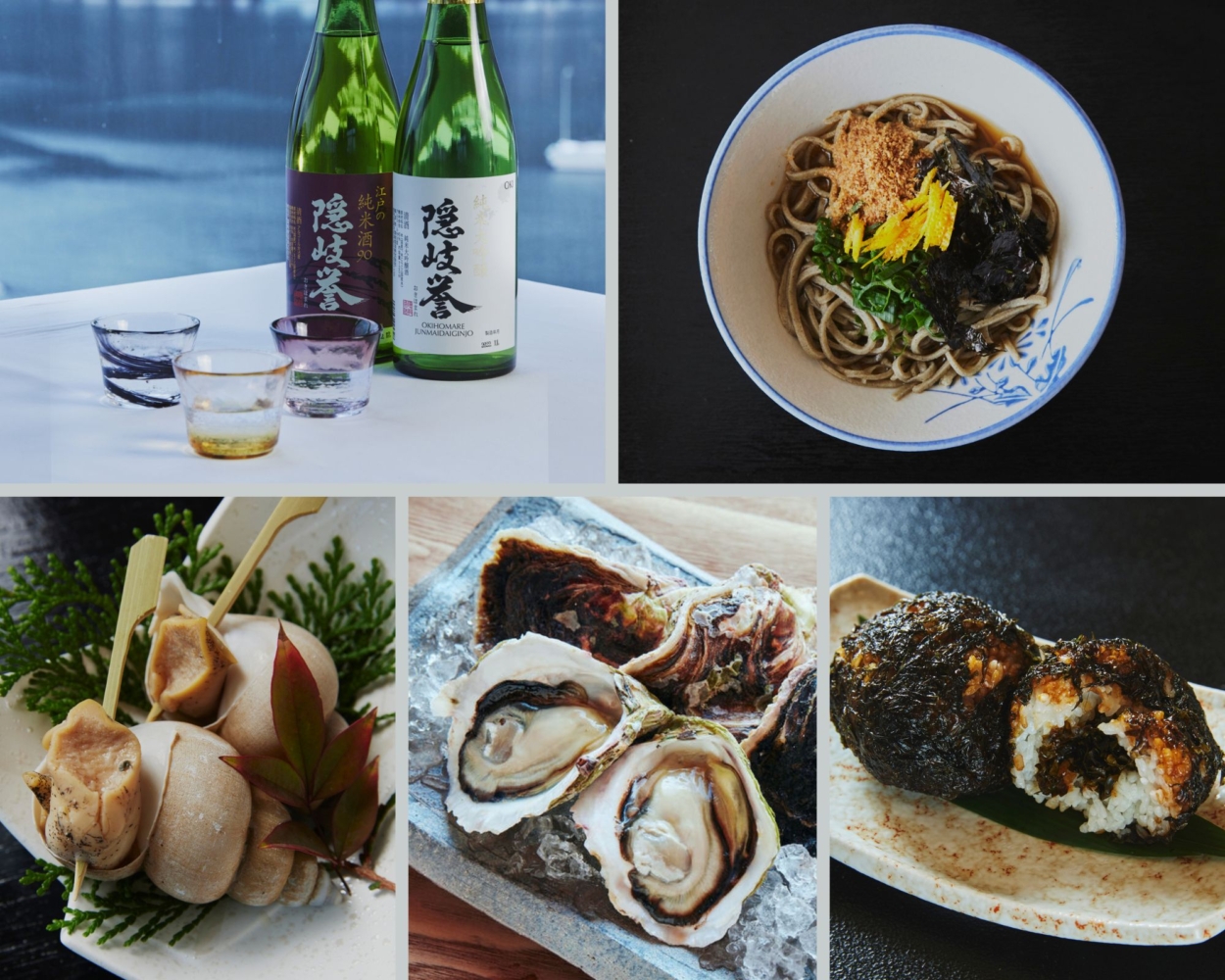From the Sea
First and foremost, the Oki Islands is synonymous with fresh fish and shellfish. The seas around the islands are teeming with a diverse range of marine life. A warm water current flows through the Sea of Japan, but temperatures drop in the sea’s lower depths. As a result, both warm-water fish and cold-water fish can be found in the same habitat, making the Oki Islands one of Japan’s top fishing regions. Seafood is almost always on the menu in some shape or form, with each season bringing its own specialties. You will never go wrong with sashimi in the Oki Islands, but there are many other ways to enjoy seafood, too. Here are some of the main offerings and popular dishes to try.
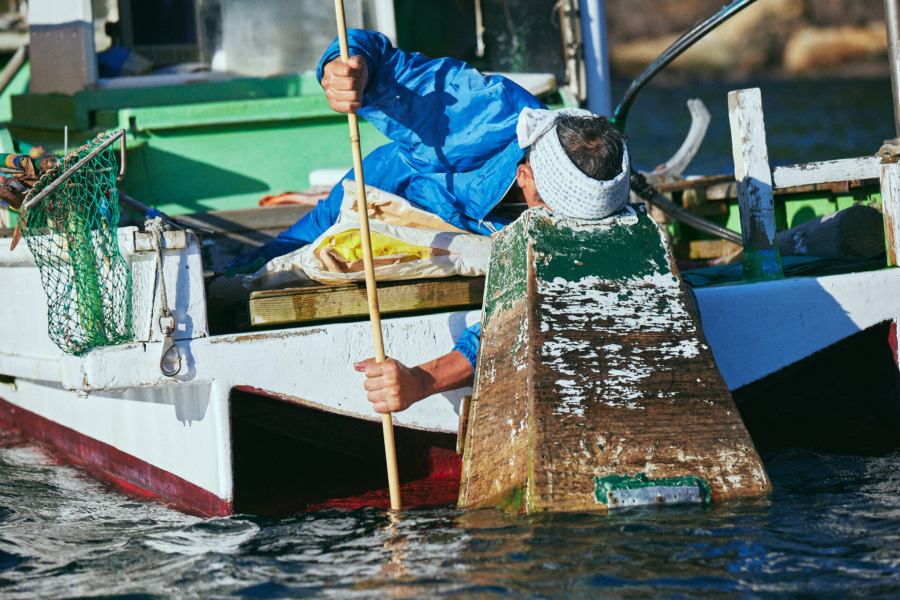
Rock Oysters (Iwagaki, March to June)
Rock oysters from the Oki Islands have a soft, juicy texture and are infused with the rich umami flavor of the sea. They are carefully nurtured for at least three years before being harvested when at their most delicious. In 1992, Nishinoshima Town was the first place in Japan where rock oysters were successfully cultivated, and the Oki Rock Oyster brand has gone on to build a reputation for quality around Japan. However, nothing quite compares to having them fresh from the source here in the Oki Islands. It is highly recommended to try them raw, either just as they are or topped with a drizzle of soy sauce or a squeeze of lemon. However, you can also have them grilled over a medium heat, which ensures they will stay tender.
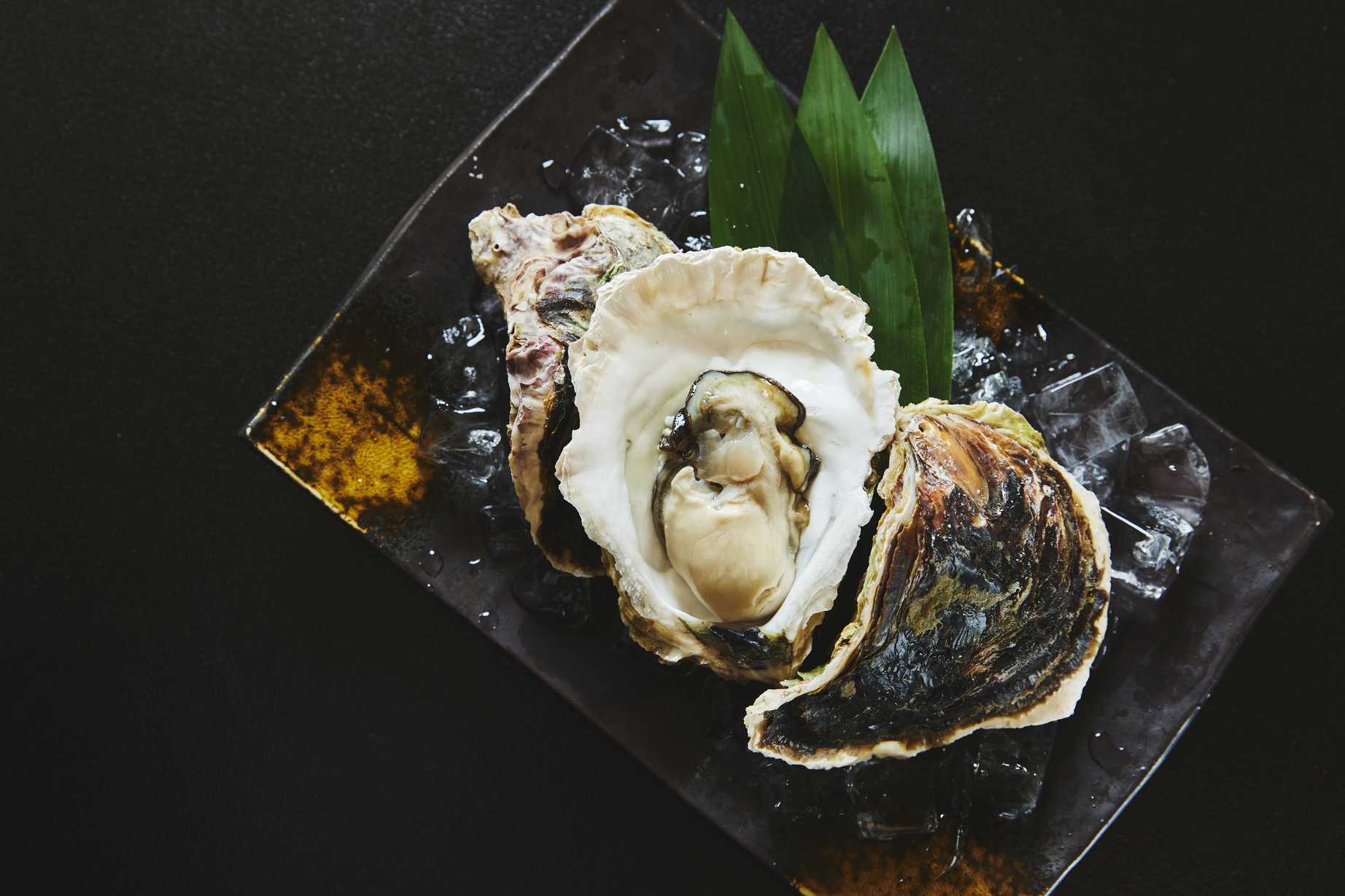
Squid (Ika, year round)
Squid fishing is one of the main industries on the Oki Islands and several kinds of squid are found here. One of the most popular is the swordtip squid, which is in season in the summer and fall. Fishing boats catch the squid along the coast, using lights to attract the creatures at night. Squid can be eaten raw in sashimi, in various simmered dishes or even dried as a snack. Nishinoshima Town is particularly fond of squid: This is where you will find Yurahime Shrine, which has a special connection to the creatures, and the town mascot is a friendly squid character called Kacchan.
Turban Shells (Sazae, spring and summer)
Turban shells are still harvested using traditional fishing methods, and some fishermen use hakomegane (a wooden box fitted with a glass bottom) to peer onto the seabed from the boat and then catch the turban shells with a spear. With their distinctive cone shapes, turban shells are a staple ingredient in several hearty local dishes. They served as an important source of protein in the past, when meat was not readily available. Sazae Gohan (Turban Shell Rice) consists of thickly-sliced turban shells cooked with vegetables and rice, and each restaurant has its own variation. Another way to enjoy turban shells and rice is Sazae Don (Turban Shell Rice Bowl). Sazae Curry is a comfort food for many local people and you can even purchase boxes of ready-made curry to take home.
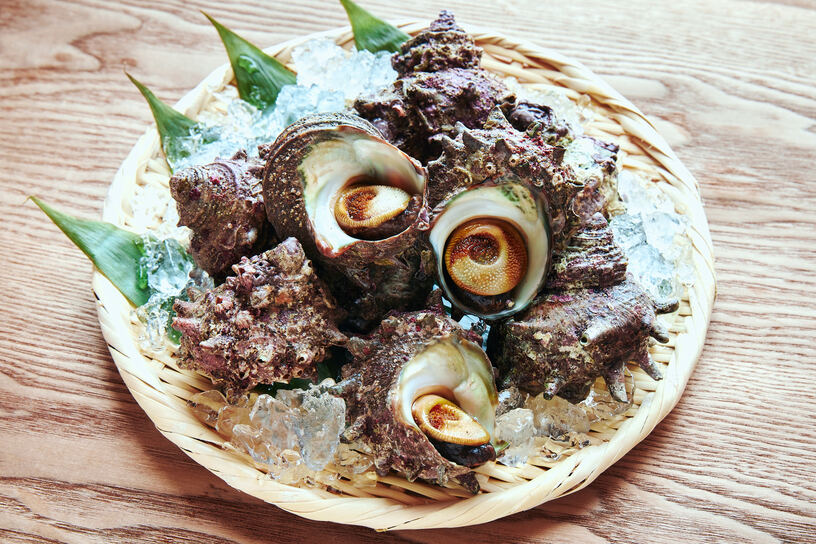
Inspired by everyone’s favorite shellfish, an enterprising local sweet maker has even created turban shell-shaped confectionary—a wafer filled with adzuki beans and sticky rice cake. And if you happen to be visiting in late July or early August, Chibu Village hosts a festival called Sazae Tsukami-dori (Turban Shell Grabbing). After trying to gather as many turban shells as possible, participants can grill and eat them on the spot or take them home.
Abalone (Awabi, year-round)
A staple in sashimi, the local abalone grows among mineral-rich seaweed in the Sea of Japan, and are prized for their large size and fine taste. In fact, there is evidence that Oki abalone were enjoyed by the imperial court as early as the tenth century. The Engishiki, an official compilation of laws and customs from 927, states that abalone were sent to the court on a regular basis for important occasions. It was unusual for the Engishiki to mention specific locations for such foods, which suggests the high regard given to seafood from the Oki Islands. You too can feast like an emperor when you visit the islands.
Matsuba Snow Crabs (Matsuba Gani, winter)
Matsuba is a type of snow crab caught between November and March using traditional crab baskets. These sweet, full-bodied crabs grow well in the nutrient-rich waters around the Oki Islands, with strict limits in place to prevent overfishing and ensure that crabs grow to a good size.
One more local seafood specialty that you might come across is a spicy hotpot called Eri-yaki Nabe. This simple, filling dish is made with fish cooked in a flavorful broth. It originated with fishermen from Nishinoshima Island who prepared and ate it on their boats after a long day out at sea.
Seaweed (Iwa-nori and Arame Seaweed)
The Oki Islands produces a variety of seaweed. Packed with nutrients, this is a gift from the sea that even those following plant-based diets can enjoy. Winter is the season for harvesting the rock seaweed that is grown on the boulders at the water’s edge. It is carefully picked and then placed on bamboo mats to dry naturally.
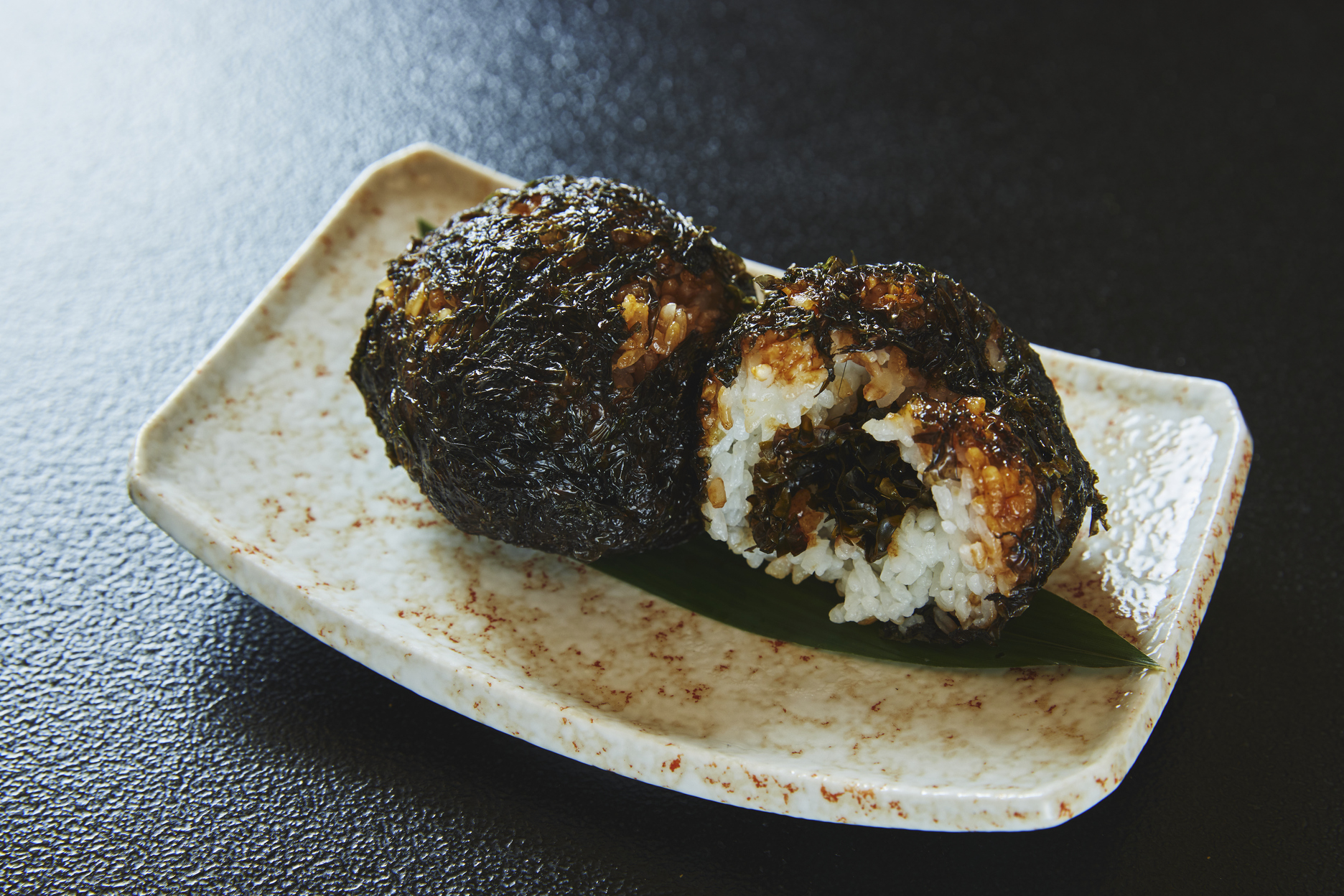
Oki rock seaweed is thick and aromatic, and pairs perfectly with rice in the local version of rice balls, Bakudan Onigiri (Rice Ball Bombs). Sheets of lightly grilled seaweed are brushed with soy sauce then wrapped tightly around an oversized rice ball. As the name suggests, they look like small bombs. Simple but full of flavor, this hearty dish is a staple in boxed lunches and is a firm favorite with all ages. Another type of seaweed you will often see here is arame. It is harvested in the spring and is a staple in many households in the islands. One popular local side dish is Braised Oki Arame, in which arame seaweed is cooked with deep-fried tofu and vegetables.
Moshio Salt
Arame seaweed is also used to make locally-produced moshio salt, giving the salt a deep caramel color and a rich, umami flavor. Moshio salt is created with time-honored techniques: Seawater is boiled down to distill the salt it contains, and then mixed with arame seaweed and boiled further until the salt crystalizes. The mixture is raked during the boiling process to ensure that fine, even-sized crystals are formed. The salt is then laid out to dry on racks and sieved to create the fine grains for the final product. You can buy packets of moshio rice to take back as unique Oki souvenirs.
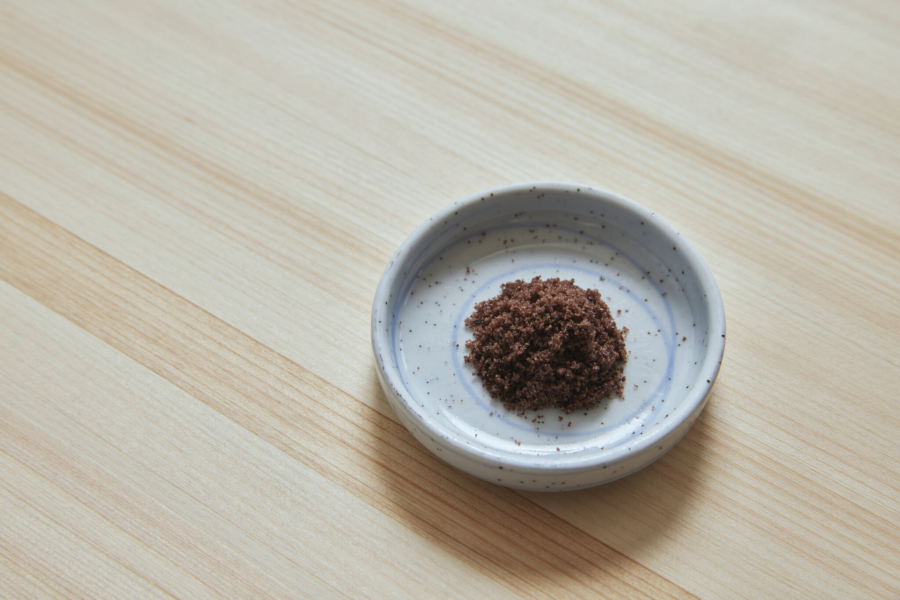
A newer use for arame is for the production of seaweed salt rice: brine made from boiled arame seaweed is sprinkled over rice plants in the summer growing period. The final product is rice enriched with minerals and a unique flavor and texture, which has been gaining attention in other regions of Japan, as well as being popular with the people of Oki.
From the Land
Beef
The Oki Islands isn’t all about seafood. It’s also famous for Oki Beef, a premium brand of wagyu beef that comes from black cattle born and raised on the islands. These cows grow up healthy and strong, roaming the hills and grazing on the mineral-rich grass. Wagyu beef is known for the intricate marbling of fat throughout the meat, contributing to its tenderness, and Oki Beef is known for having a surprisingly light flavor. Oki Beef is typically eaten grilled as yakiniku, with dipping sauces such as wasabi mixed with soy sauce or miso sauce mixed with garlic.
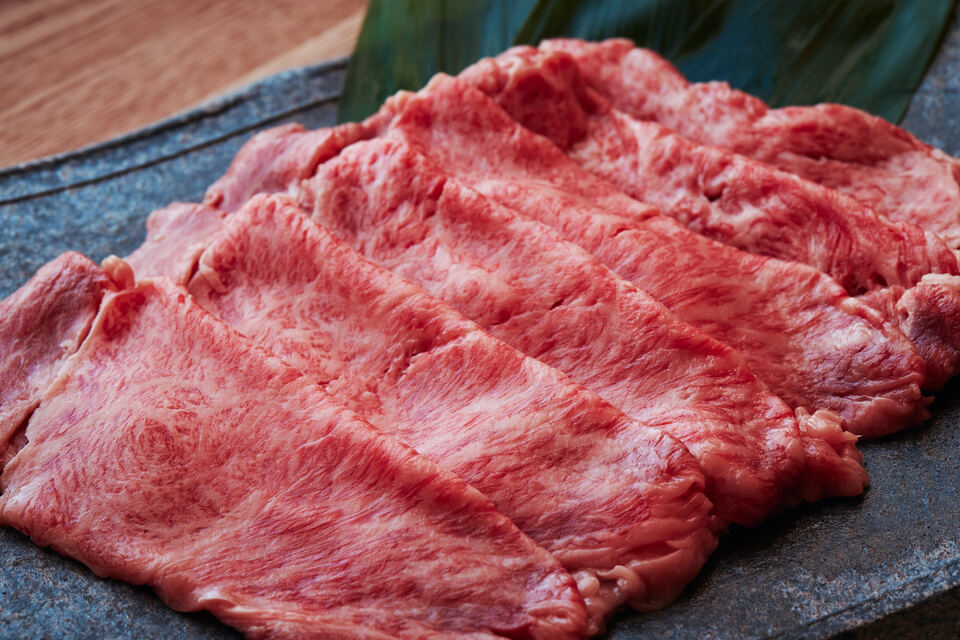
Oki Soba
Almost every part of Japan has a signature noodle dish and the Oki Islands is no exception. In this case, it’s soba noodles made with buckwheat flour. These soba noodles are generally quite short and thick, and unlike regular soba noodles, they contain no gluten and so are suitable for those on a gluten-free diet. The soba is served with a fish-based broth—typically flying fish or grilled mackerel—and then topped with seaweed, sesame seeds, chopped spring onions and grated yuzu (a type of citrus). Traditionally Oki Soba is served on special occasions, such as weddings and new year’s celebrations, but you will find it on the menu year-round at some restaurants, particularly in Okinoshima Town.
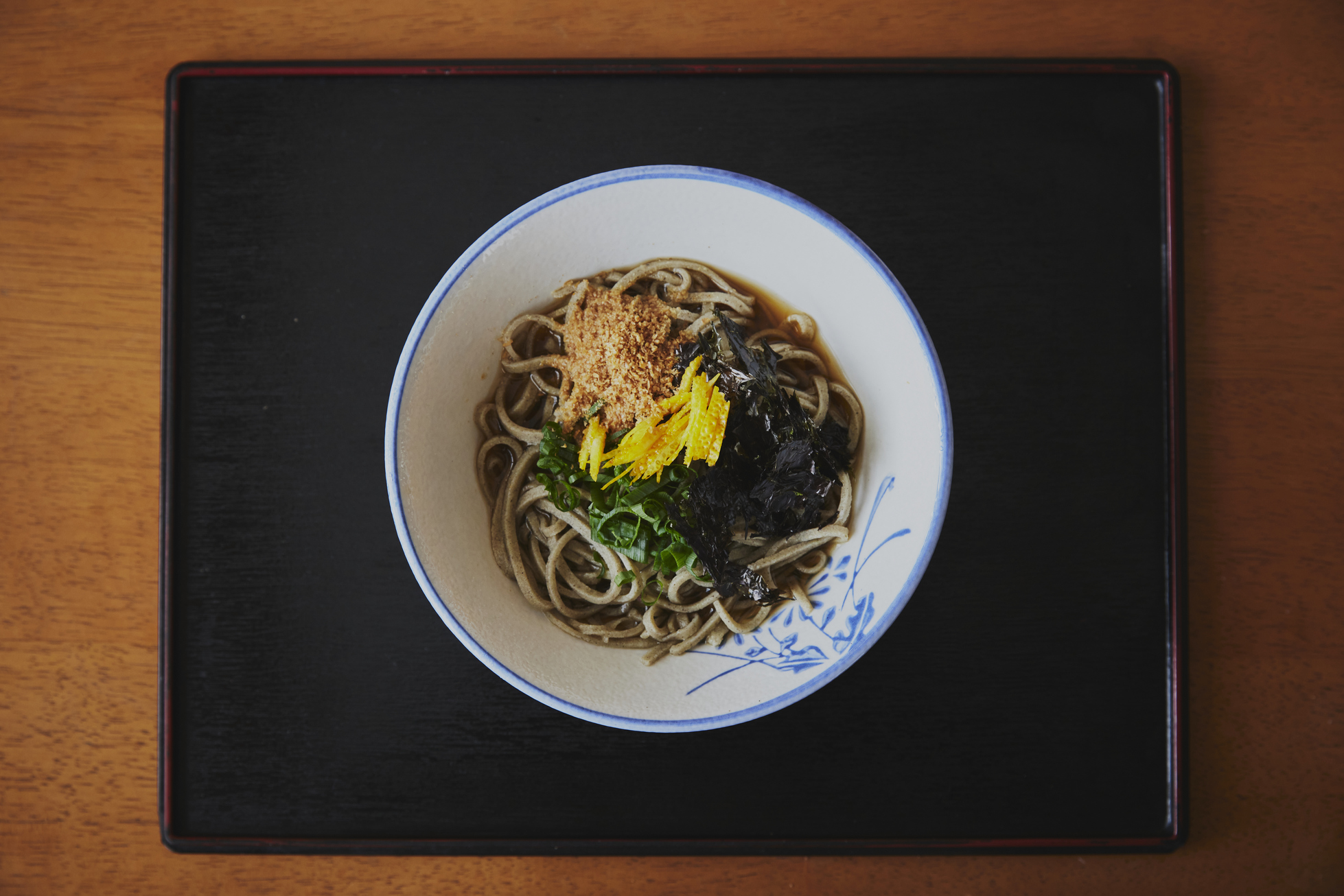
Another unique local dish is Yakimeshi Chazuke, with rice as the star ingredient. In other parts of Japan, chazuke usually refers to hot tea poured over a bowl of cooked rice. However, the Oki version starts off with rice balls that are coated with a mixture of miso and soy sauce and slowly grilled. The grilled rice ball is then placed in a bowl, garnished with pickled plums and spring onions, and topped with hot green tea.
Oki Island Sake
The Oki Islands are part of Shimane Prefecture, which is considered to be the birthplace of sake due to its deep connection with Japanese mythology. According to legend, sake’s origins can be traced back to the gods Izanagi and Izanami, the creators of the Japanese islands. The Oki Islands are blessed with high-quality water and ideal growing conditions for rice, both of which are necessary for sake production. There were once five sake brewers operating on Dōgo Island, but in 1972 they decided to pool their resources and joined forces to form the Oki Sake Brewery. Today their sakes are offered in restaurants and sold in shops around the islands. Oki Sake Brewery’s signature range is Oki Homare (Pride of Oki), which comes in a range of flavors.
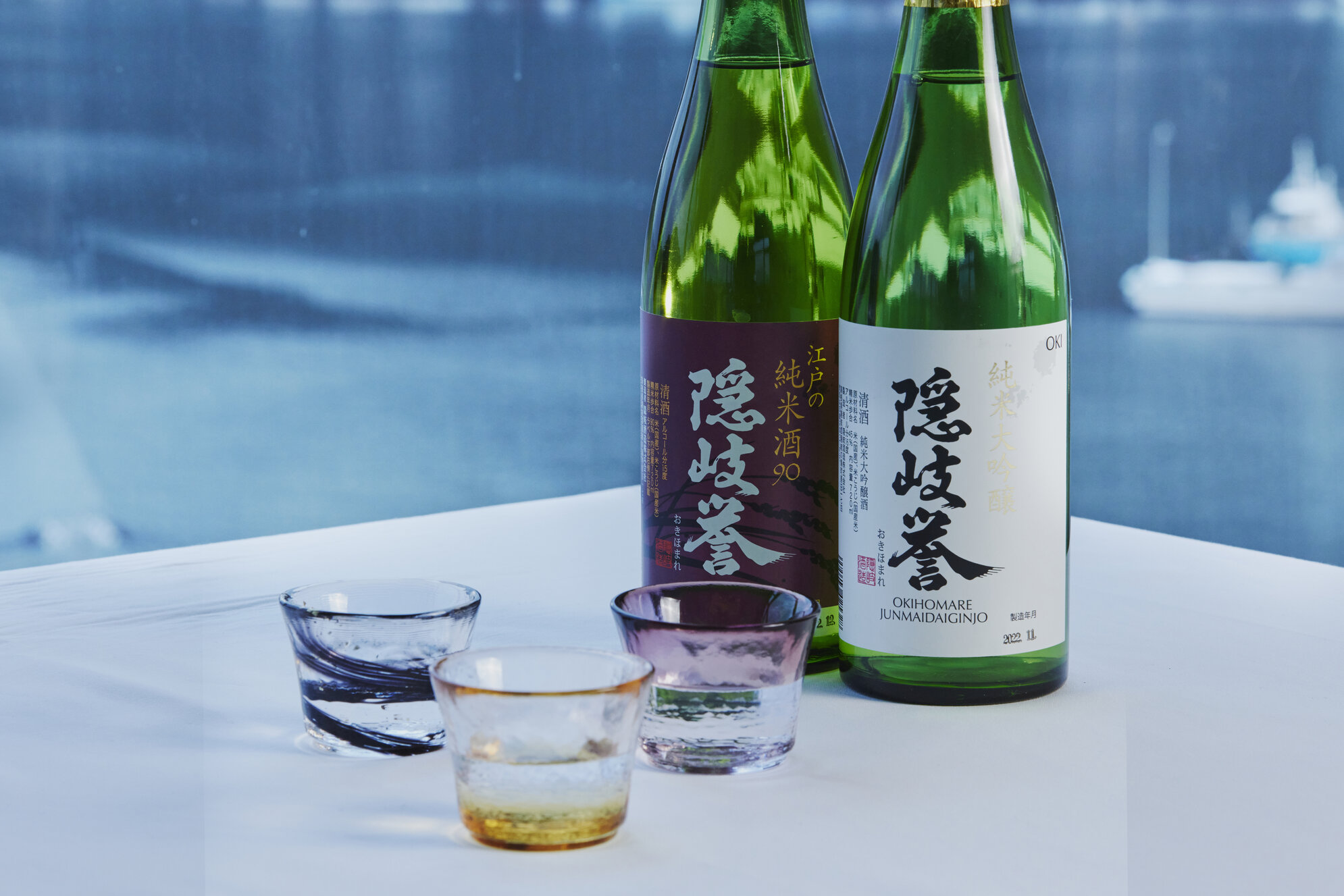
The brewery is also experimenting with different recipes, such as a recreation of the sake that would have been enjoyed by Emperor Go-Toba (1180-1239) after he was exiled to the Oki Islands. If you would like to learn more about local sake, some restaurants offer tasting sets to enjoy with the local dishes. Sake also makes an ideal gift to take home for friends and family.
Whether you’re feasting at a ryokan (traditional Japanese inn), sitting side-by-side with locals in a family-run diner or enjoying a quiet moment in a cozy café, a world of good taste awaits in the Oki Islands.

